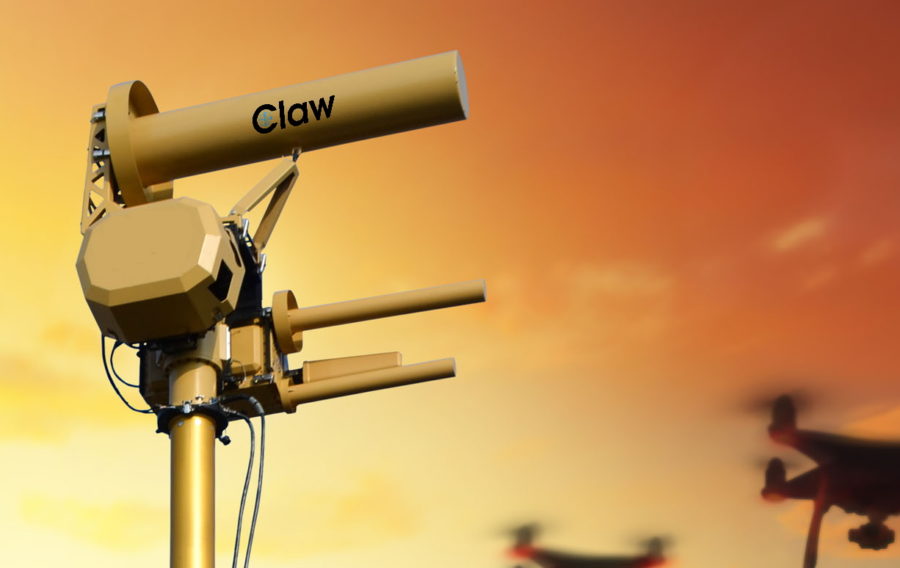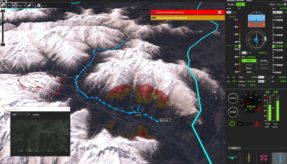
Writing for Defence Online, Paul Taylor, Business Development Director at Enterprise Control Systems, explores how defence and security teams can keep ahead of growing threats from unmanned systems in the multi-domain environment spanning air (drones), land (ground) and sea (surface).
While Unmanned Aerial Systems (UAS) are far from new technology, never before have they posed such a serious threat to global security. From cutting-edge and long-range systems to homemade devices, UAS or Unmanned Aerial Vehicles (UAVs) are no longer exclusive to military and defence teams, but readily available and accessible to the broader population. This has resulted in a steady increase in malicious attacks over the past five years, including the recent drone ambush at a US airbase in Iraq, a similar drone attack in Iran earlier this year, and reports of ‘home-made’ Syrian drones attacking a Russian airbase. We expect to see a growth of malicious UAS capable of delivering harmful payloads or disrupting ground and air operations in conflict-zones, as well as impacting critical national infrastructure as the technology becomes progressively more widespread.
Any unmanned system – air, ground or surface vessel – is challenging to detect using traditional methods, such as satellite, infra-red (IR), electro-optics (EO) or radar, meaning that attacks are more likely to catch targets off-guard or in more vulnerable states. These unmanned systems, given their relatively small sizes, are equally difficult to defeat by traditional methods such as missiles and gun systems. This is where Radio Frequency (RF) inhibition technology comes into play with Electronic Attack (EA) against the Command, Control and Communications (C3) links that unmanned systems require. Not only can sophisticated RF solutions respond to threats today but they’ll deter and counter those plotted for the future. So here’s how RF technology, combined with insight into developing threats, can help defence teams across the world keep one step ahead.
Extended range, directionality and Software Defined Radio (SDR)
RF inhibitors provide signal inhibition of unmanned systems’ C3 links. With increasing mobility, speed and distance capabilities of unmanned devices, countermeasures today require longer-range, specific frequencies, high spectral purity and directional beams to increase chances of defeat and minimise collateral impacts in complex operating environments.
RF countermeasure inhibition techniques have evolved from analogue, through Direct Digital Synthesis (DDS), to the latest Software Defined Radio (SDR) technology. SDR sources enable countermeasure systems to keep pace with, and defeat, the ever-evolving specialised C3 links being seen in the unmanned systems domain. An advanced SDR based technique coupled with the directional inhibition ‘beam’ is the key to defeating the most advanced frequency agile and band agile C3 links at the range required to protect against today’s long distance, fast-moving unmanned threats.
At present, drones/UAS continue to be one of the biggest threats to military coalition forces in the Middle East, according to US Central Command. ECS’s Claw RF inhibitor – accredited with over 2,000 UAS defeats and deployed in the 2017 Battle of Mosul – is a prime example of how RF inhibition technology is currently being operated by multiple users, including the US Department of Defence, both Army and Air Force, to counter UAS threats in a number of conflicts and other operational zones.
Focus on agility and usability
Anticipating the next unmanned systems threat is key to developing the next generation of RF inhibitors and developing incremental upgrades and expansion capabilities that can be deployed to existing solutions in the field. This agile approach requires detailed intelligence and analysis from end-users, from industry, and from comprehensively understanding the technology and its potential.
Yet this sophistication must couple with usability; countermeasure devices must incorporate simple control interfaces to be effective. Even the most cutting-edge of technologies would be rendered inefficient if they hindered a teams’ response capability during an attack. RF countermeasure solutions must be designed fully power-efficient and incorporate both stable and dynamically configurable power control. In other words, allowing users to turn the power up or down when needed and guaranteeing the same level of performance across a wide range of extreme environments – from desert to the Arctic.
Ongoing innovation and modularity
Awareness of relevant technology innovation, combined with insight into threat development, is needed to combat unmanned systems threats and to deter and counter future attacks. Designing solutions with knowledge and understanding of the concept of operations leads to a coherent migration path. Clever design modularity, as incorporated in the Claw inhibitor, allows incremental innovations to rapidly and effectively address any changes in the threat.
Counter unmanned systems will ultimately have to form part of every country’s overall strategic defence capability. To stay ahead of threats and solve challenges that teams on the battlefield often don’t yet know they face, defence and security organisations will continue to rely upon manufacturers to understand capabilities, prioritise innovation and develop solutions at pace. For over two decades ECS has partnered with defence organisations to develop and deploy the latest RF technology aimed at mitigating the risks associated with these air, sea and land-borne threats.
Going forward, as UAS and other unmanned attacks continue to evolve, the effectiveness of countermeasure solutions will depend to a large extent upon the ability to understand and foresee the next generation technology that is likely to be deployed to rapidly adapt and advance countermeasure solutions on the battlefield.
If you would like to join our community and read more articles like this then please click here.







